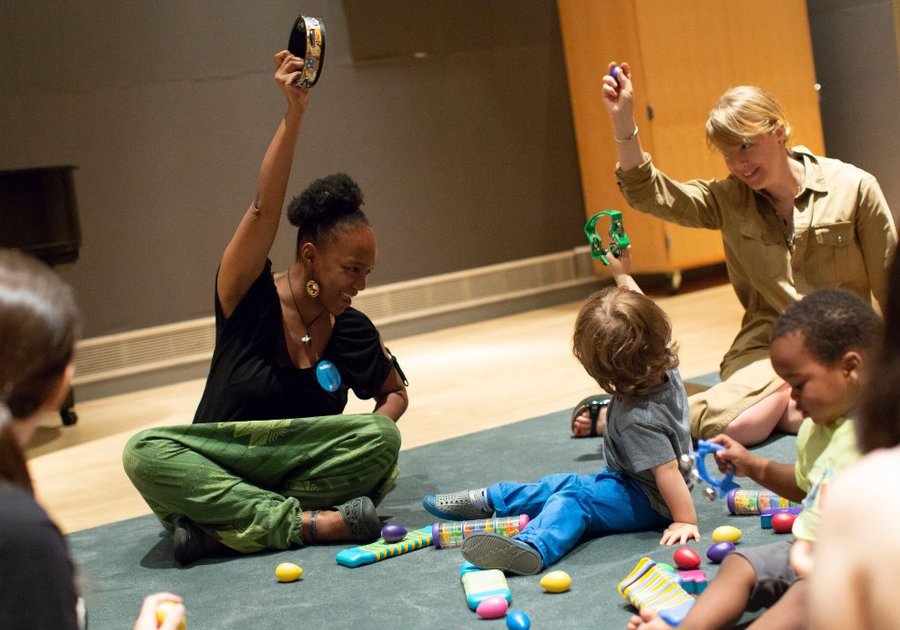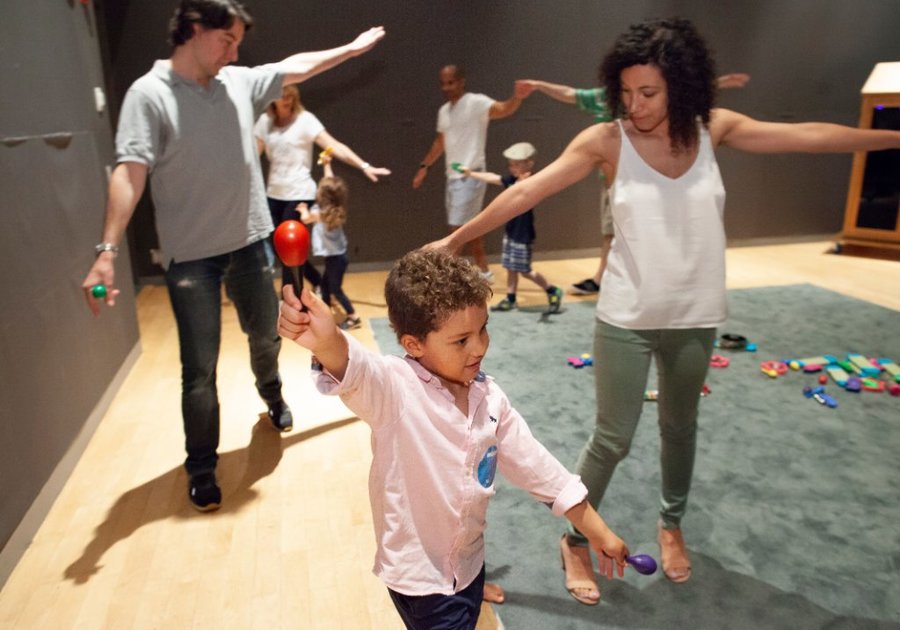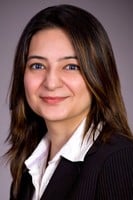Adriana, please tell us a little about yourself and your background.
I’m a music educator, arts advocate, and researcher. I earned a Doctorate in Music and Music Education from Teachers College, Columbia University, where I also completed a Master of Arts as a Fulbright Scholar. My work focuses primarily on designing and implementing diverse and inclusive programming as well as educational curricula to better engage students from a variety of backgrounds and experiences. I currently serve as an adjunct assistant professor in the Arts and Humanities Department at Teachers College, Columbia University and love to put my research into practice as manager of the WeBop program at Jazz at Lincoln Center.
I’m originally from Peru, where I taught general music and piano to children for more than 10 years, both privately and in schools, and worked as an arts consultant for the Ministry of Women and Vulnerable Populations. Before joining the Jazz at Lincoln Center team, I worked as an arts educational consultant with Columbia Head Start, The Philadelphia Orchestra, NY Philharmonic, and the National Center for Children and Families.
What is the concept behind the program WeBop?
WeBop was founded by Jazz at Lincoln Center and Dr. Lori Custodero, renowned early childhood music scholar at Columbia University’s Teachers College. In keeping with Dr. Custodero’s work, cutting-edge theories of early childhood development, a student-centered approach and responsive pedagogy are at the core of our WeBop program. In WeBop, we strongly believe in children’s natural abilities to improvise since they, like jazz musicians, draw upon everything they know to construct their own worlds, welcoming a sense of wonder and delighting in new discovery. In this way, the program’s pedagogy and practice emphasize the relationship between children’s ways of being and jazz performance practices and provide opportunities for families to discover and use the incredible power of jazz to bond and connect with each other.
What is the ideal age group for your classes? How are classes structured?
The WeBop Program is designed to engage young learners ages 8 months to 7 years and their parents/caregivers. We have carefully crafted a music curriculum with engaging activities that support the varied developmental needs of five different age groups: Hipsters (8 months to 15 months/non-walking infants), Scatters (walking infants to 23 months), Stompers (2 – 3.5-year-olds), Gumbo Group (3.5 – 5-year-olds) and Syncopators (5 – 7-year-olds). This fall term our virtual and in-person offerings are limited to walking babies up to 5-year-olds, but we hope to bring back more age groups by the winter.
Each WeBop class is structured to have a clear beginning, middle, and end, often within the context of a dramatic narrative. Whether we are taking a boat trip down to New Orleans, going on an adventure, or coming back home, our students are intrinsically motivated to participate in the story, anticipating what comes next with an improvisatory spirit.
The program is organized in 8-week terms, and each class is facilitated by a WeBop teacher, supported by an accompanist on the piano. The curricula incorporate both live and recorded music that provide opportunities to explore jazz through multimodal experiences (movement, singing, playing, active listening). In addition to these activities, professional jazz musicians visit the class twice per term to introduce families to a live jazz band, reinforcing the repertoire and concepts learned in class.
Depending on the term, families will learn about important ingredients of jazz, such as Swing and Blues, jazz heroes like Louis Armstrong or Ella Fitzgerald, or jazz styles such as Latin or Cool jazz.
What makes WeBop unique from other music classes?
WeBop stands apart from other early childhood programs in that it engages each and every participating student, includes live music performed by professional musicians, and teaches authentic jazz concepts to our youngest audiences through fun and highly interactive classes. Each class member contributes in their own way, making a unique ensemble of shared experiences. The adult-child dyad and the relationship they build while experiencing authentic jazz music together is at the core of what makes WeBop such an enriching experience for both children and their caregivers.
What can parents expect for their child’s first jazz class?
Parents can expect to have as much fun as their children while they engage in authentic musical experiences true to the artistic integrity of jazz! Our classes are an opportunity for children and grownups to bond and express themselves together through jazz by moving, singing, and playing small percussion instruments. Additionally, we provide take-home materials each week, reinforcing key concepts learned in our sessions and fun, unique ideas on how to continue the learning at home. Our “swing sets” include audio and/or video of music utilized throughout class.
How do you encourage students to build an interest in understanding jazz?
Parents are a child’s first teachers, and that applies to all areas of development, including music! During the sensitive and rapid period of development (birth-5-years), young children are surrounded and influenced by an environment of relationships, and healthy development depends on the quality and reliability of those relationships. Children learn to love what their parents love -- chances are if parents have been listening to jazz, their children already recognize and enjoy our American art form! Research shows that preferences develop early, even before birth, and that healthy family relationships create a context for optimal social, emotional, and cognitive growth. As parent and child move and sing, scat and swing to the rhythms of great jazz artists, they are becoming attuned not only to the emotional content and formal structure of this music, but also to one another.
See below for some ideas on how to support your jazz musician at home:
Set up “at home family dance parties.” Dress up and put on some of your favorite jazz tunes such as “When the Saints Go Marching In”, “It Don’t Mean A Thing (If It Ain’t Got That Swing),” or “Tin Tin Deo” and dance with your child. Your whole family will have a blast and you will be supporting your child’s physical development, specifically bilateral coordination (the ability to coordinate both sides of the body at the same time in a controlled and organized manner) and spatial awareness (the ability to notice and understand the position of objects and people in the space as well as in relation to other things).
Have your own jam session. Get out your instruments or use recycled materials to make your own band. You can tap the clave along with “El Manisero”, play freely along with Free Jazz exploration, or put your favorite food into the beat along with Dizzy’s Gillespie’s “Salt Peanuts”!
Create “chill towns” with quiet music. Positive moments of calm and beauty are more important now than ever. Jazz ballads create the best ambiance to have an intimate dance with your child either cheek-to-cheek or with scarves. Try this at night or at any time you and your child need some quiet time to recharge.
What kinds of musical instruments are used in the class?
For all our classes we use high-quality, non-pitch instructions such as hand drums, shakers and other small percussion instruments. Additionally, since Syncopators (5- 7 years) start exploring pitch instruments, we introduce metallophones and p-Bone trombones.
How do you think jazz helps children grow?
Jazz has often been seen as an enduring symbol of democracy and inclusiveness. In this musical genre, a diverse group of musicians negotiates in order to create a collective musical expression that respects their unique personalities, attitudes, and values all while representing their communal voice. This unique environment provides a nurturing space for young children to optimize their musical potential and expertise by exposing them to rich melodies, rhythms, and harmonies while also providing space and freedom to be themselves. Like jazz musicians, children attending WeBop make music freely within a commonly understood structure while developing self-expression and communication skills. The WeBop environment encourages all to actively participate in an improvisatory spirit, each contributing in their own way to create a unique ensemble.
What advice would you give a parent whose kid is passionate about jazz?
See below for some tips to foster your child’s passion for jazz:
- Explore a variety of jazz tunes with your child and observe how they respond (dancing slow or fast, clapping, tapping etc.). If they are having a good time, repeat the same activity over and over. Young children’s learning is spiral: they learn and forget, that’s why repetition is key during the early childhood years.
- Show your enjoyment of jazz music. Have fun when you sing, dance and play with your child.
- Follow your child’s musical lead. Imitate their vocal sounds, dance movements, and improvise together.
- Allow your child the joys of discovery, even if it takes longer than you’d expect.
- When you make music with your child, allow yourself to enjoy the musical experience!
Are there any books or apps you would like to recommend for kids?
What A Wonderful World by Bob Thiele & George David Weiss and illustrated by Tim Hopgood; Jazz Baby by Lisa Wheeler and illustrated by Gregory Christie; Jazz Baby by Carol Boston and illustrated by Laura Freeman; and This Jazz Man by Karen Ehrhardt and illustrated by R.G. Roth. We also have plans to publish a beautiful book inspired by Ella Fitzgerald’s A-Tisket-A-Tasket, illustrated by the amazing artist Geoffrey Loomis.
Thank you so much for your time!











